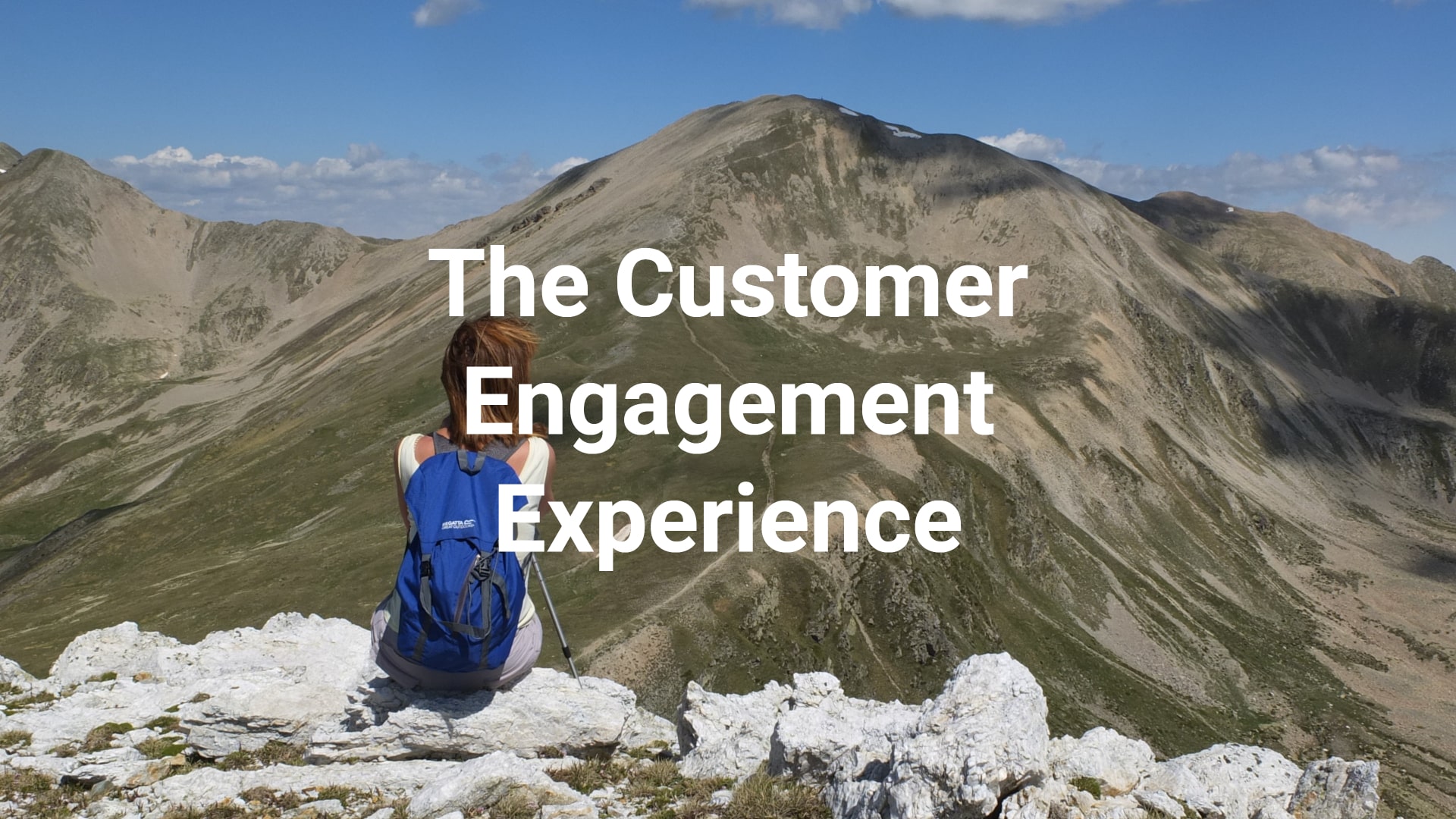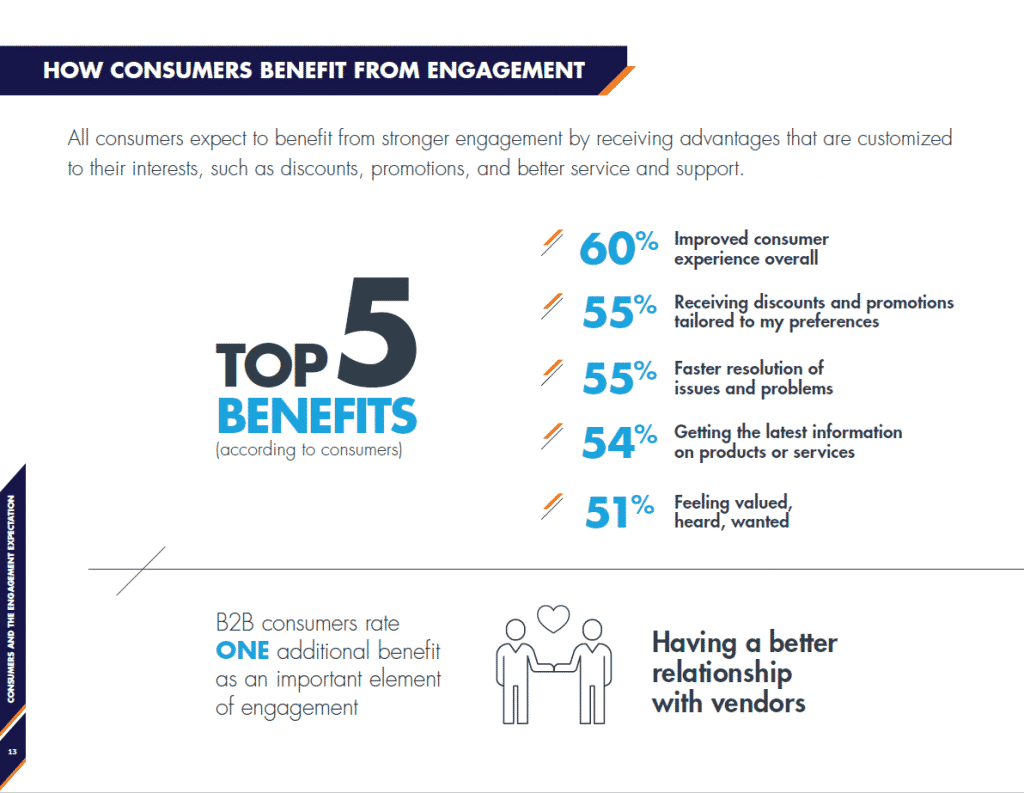Your customers want you to engage with them.
That might be hard to swallow, given how much marketing noise people are exposed to every day, and how many new ways people have come up with to filter out that noise.
But it’s absolutely true.
In fact, customers are reaching out to brands at an increasing rate — Sprout Social’s recent study found an 18% increase in social messages alone in the last year. And brands are dropping the ball — that same report showed that brands only respond to 11% of people, and take an average of 10 hours to respond to those few.
That’s ridiculous.
What’s the holdup? Why aren’t more companies responding to their customers’ desire to engage?
I believe that at least part of it is a perspective issue.
Often when I talk to new clients, they believe one of three things:
- Their prospects and customers don’t want to be bothered. As a result, the company isn’t reaching out at all.
- The only thing the company has to offer is a product/service. The result is that they blast their audience with messaging around that product/service, megaphone-style, and customers either tune them out or get offended.
- The current marketing trend is X, so X is what they need to do.
These companies are thinking in terms of “how can I sell to these people” instead of “how can I help these people”.
So here’s the perspective shift you need to make:
Your customers do want to engage with you, they have preferences on how they want to engage, and engaging with customers in these preferred ways will help you build better customer relationships.
So how do your customers want to engage? Let’s start with some public data.
Look at the Current Market Research Reports
The most recent State of Engagement report from Marketo found that B2B consumers engage with a brand for these reasons:
- Overall improved customer experience
- Tailored discounts and promotions according to their interests
- More efficient resolutions to problems
- Staying up-to-date on products and services
- Feeling understood and valued by the company
- Having better relationships with vendors
Source: The State of Engagement report from Marketo
Take a closer look.
Out of the six points of interest there, only two have to do with products and services.
Two.
The other four are all relational needs: improved customer experience, efficient resolutions to problems, feeling understood, having better relationships.
Now think about your own marketing. What percentage of your marketing is focused on pushing a product or a service? With this data in mind, do you think maybe that percentage is higher than it should be?
Looking further at that report we find that 50% of consumers think brands could do a better job of aligning with how consumers prefer to engage, and 75% think that brands must have a deep understanding of their needs in order to engage successfully.
In other words, your customers expect you to know what their needs are and then engage appropriately.
Here’s a stat from the Marketo report that should knock your socks off:
The #1 reason consumers don’t engage more often is irrelevant content.
I’m tempted to put 10 emojis on either side of that statement to drive it home.
Your customers are practically screaming from the mountaintops that they want you to communicate with them in meaningful ways because they believe they benefit from the interaction.
Take an Omnichannel Approach — but Still Put Value, Relevance, and Customer Preference First
So you know your customers are looking for meaningful interactions and relevant content from you. The question now is through what channels?
Here are the top five channels consumers use to initiate engagement, once again from the Marketo report:
- Website
- Social media
- Chat
- Mobile device or app
Interestingly, Marketo found that B2B customers are using more channels than B2C customers are, and they’re more likely to use email, chat, podcasts, and online communities.
We live in an omnichannel world, and we need an omnichannel approach to engaging with our customers.
Right now you might be thinking, How can I keep up with content for all those channels?
That’s the wrong question. You’re putting the cart before the horse.
The right question is: How can I make sure there’s valuable, relevant content for my customers in every channel they engage with?
Only when you’ve got the right content should you start concerning yourself with what channels to share it in.
Now you can look at your analytics and customer feedback data to determine which channels your customers are using most often to engage with your company, and place the content there first. Repurpose it for every other channel in order of customer preference.
Have 100 Coffees
You may have noticed that I mentioned “customer feedback” above.
Did it make you cringe?
This is often the most uncomfortable question I ask potential clients during our first consult call: What kind of customer insight have you been gathering?
It’s uncomfortable because most companies aren’t gathering customer insight at all.
If you’re not talking directly to your customers, you’ve got a big problem.
Digital marketing is a fantastic thing, and the tools we have available today to converse with our customers are incredibly effective. But no software or marketing tactic will take the place of talking to your customers and getting their input in their own words.
- Talk to them directly in customer interviews.
- Survey them regularly.
- See what they’re sharing in reviews — not just of your product or service, but your competitors’ as well.
How can you build a better customer experience if you don’t talk to your customers?
You can’t.
While gathering customer insight should be a regular part of your marketing strategy, you can kick it off with a bang by treating it as a project.
I have a friend who specializes in helping high-touch service businesses optimize their systems so they gain more capacity without hiring more employees. She’s brilliant at what she does, and she’s well-known for it, too. Yet when she decided to launch a new offering, she didn’t just rest on her laurels. She started what she calls a “100 Conversations” project.
Her goal is to have 100 conversations with high-touch service business owners to learn more about their experiences. In these calls, she asks strategic questions about their business and their systems — but she often comes up with ideas and solutions for them as they talk, too.
There are so many benefits to these calls:
- She’s learning about her target audience, which is helping her build the most ideal service offering for them.
- She’s hearing them explain their problems in their own words, so she knows exactly how to talk about those problems in her content, what topics will resonate best, and what solutions she could offer in that content to make the most impact for her audience.
- She’s making connections, so her referral network is growing by leaps and bounds.
- These potential customers are seeing firsthand how she thinks and works, and they’re getting immediate benefit from her as she shares her ideas with them.
She is doing foundational work that most businesses aren’t doing. And she doesn’t have nearly the resources most B2B companies have. Frankly, if she can do this, your company can.
About 85% of B2B decision-makers start the buying process after a recommendation from a friend or colleague. And 66% of B2B customers want to advocate for brands that demonstrate they care about their customers (yup, from that Marketo report again). Make an effort to understand your customers and engage with them, and your marketing efforts will go so much further.
Have 100 conversations. Make 100 coffee dates. Get 100 customers to commit to sharing their experiences with you in some way. Your marketing content will benefit more from this exercise than almost anything else I can suggest.
With this customer insight in-hand, you can build a better customer experience at every engagement touchpoint.
Your Customers EXPECT You to Engage … Appropriately
Your customers are expecting you to engage with them. If there’s a disconnect between what your customers expect and how you’re actually communicating, you’re creating friction.
Eliminate that friction by learning more about your customers and their expectations. Take that knowledge and implement strategies to improve your customer engagement with more meaningful content. You’ll turn your customers into evangelists, boost your ROI, and increase the number of people you can serve in the future.
And when you’re ready to turn that customer insight into high-value content, let’s talk!

